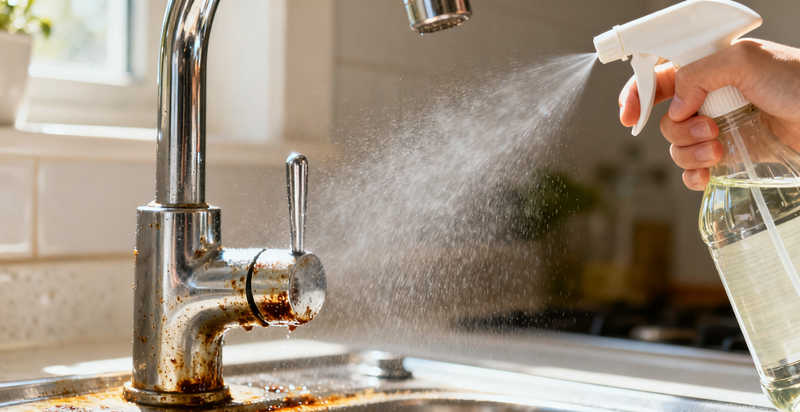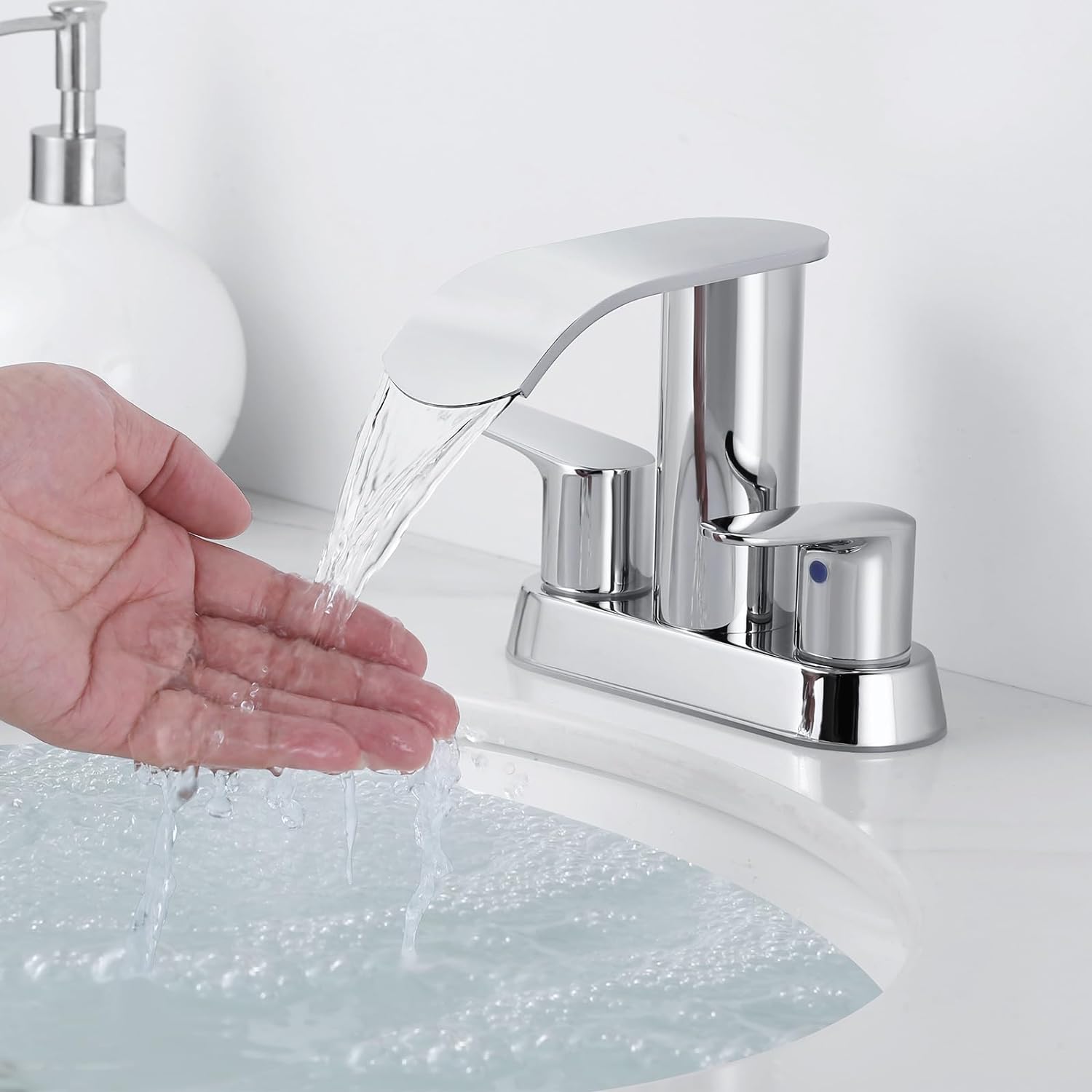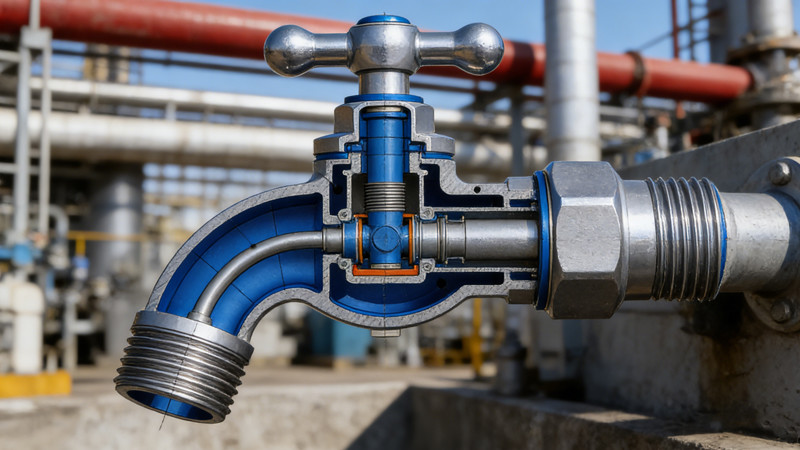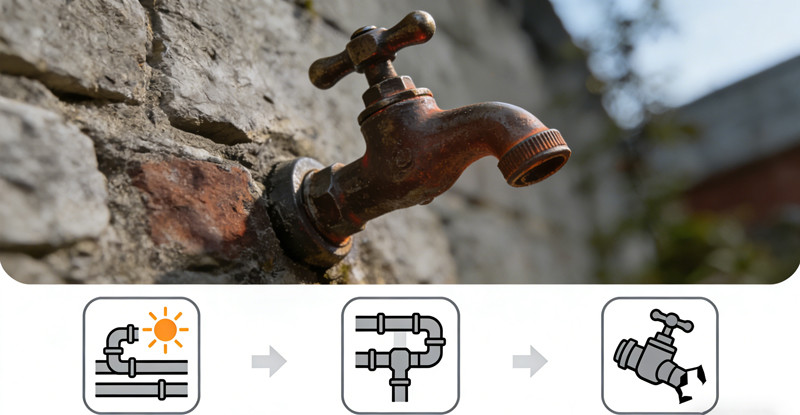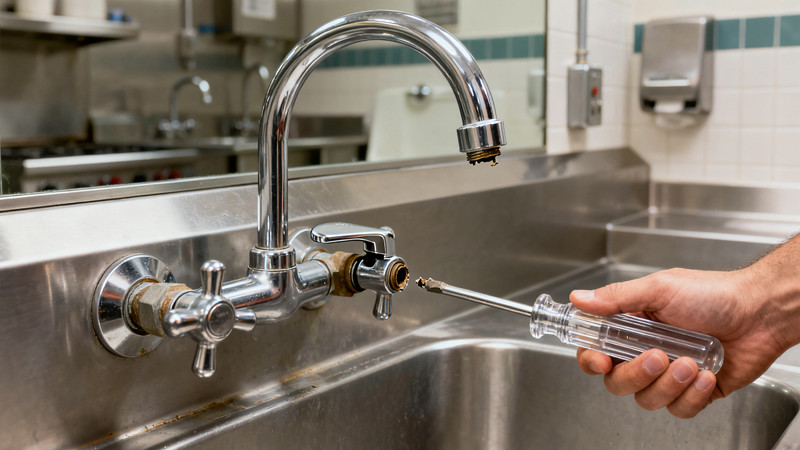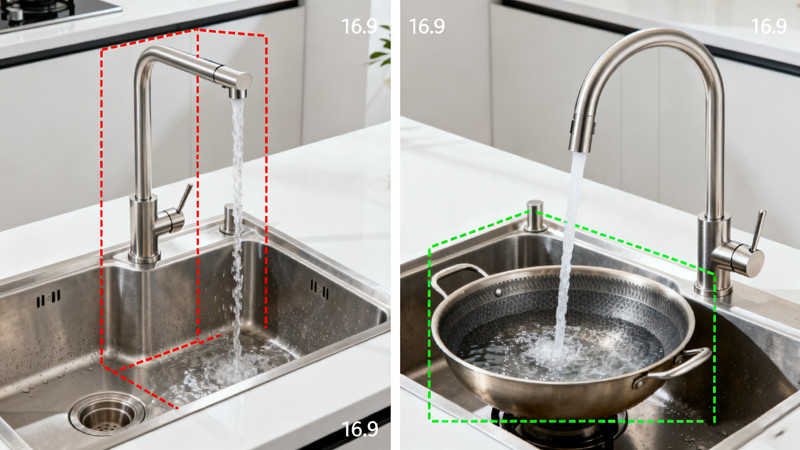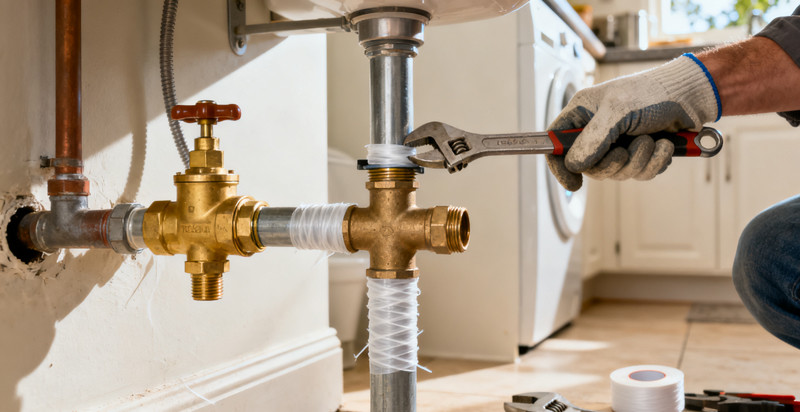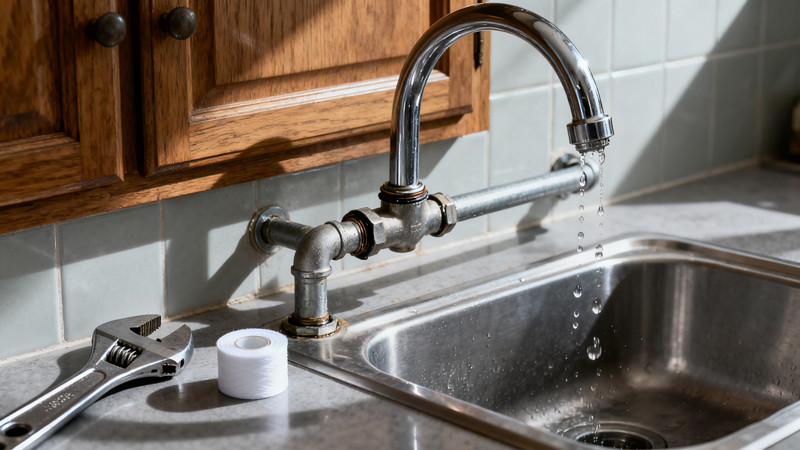A kitchen faucet is one of the most frequently used fixtures in any home — and also one of the easiest to overlook when it comes to cleaning. While you might regularly wipe down your countertops and scrub your sink, the faucet often accumulates an invisible enemy: grease. Over time, tiny splatters from cooking oil, butter, and other fats can cling to your faucet’s surface, leaving behind a sticky residue that attracts dirt, dust, and grime. If left unattended, this buildup can dull the finish and even cause long-term damage.
Fortunately, cleaning grease from your kitchen faucet doesn’t require harsh chemicals or professional tools. With the right techniques and a few simple ingredients, you can restore your faucet’s shine in minutes. In this guide, we’ll show you how to remove grease safely and effectively, no matter what type of faucet you have.
1. Why Grease Builds Up on Faucets
Grease buildup is a natural result of everyday cooking. When you fry food, sauté vegetables, or roast meats, microscopic oil droplets are released into the air. These droplets travel through your kitchen and eventually settle on surrounding surfaces — including your faucet. Because faucets are often near the stove or food prep area, they become a magnet for these greasy particles.
But grease alone isn’t the only culprit. Once a thin film of oil forms on your faucet, it starts to trap dust, soap residue, and mineral deposits, creating a layer that becomes harder to remove over time. The longer you wait to clean it, the more stubborn it gets.
2. Know Your Faucet’s Finish
Before you grab the nearest scrubber or cleaner, take a moment to identify your faucet’s material and finish. This is crucial because some cleaning agents can damage certain surfaces.
- Chrome faucets – Durable and shiny but can scratch easily if cleaned with abrasive pads.
- Brushed nickel faucets – Resistant to fingerprints but sensitive to acidic cleaners.
- Stainless steel faucets – Tough and corrosion-resistant, but can show water spots if not dried properly.
- Matte black or colored finishes – Modern and elegant, but prone to fading if exposed to harsh chemicals.
Always check your faucet manufacturer’s cleaning recommendations before using any strong detergent or acidic solution.
3. What You’ll Need
You don’t need fancy products to tackle grease — just a few household staples. Gather these items:
- Warm water
- Mild dish soap (preferably degreasing type)
- White vinegar
- Baking soda (optional for tough spots)
- A soft microfiber cloth
- A toothbrush or small cleaning brush
- A spray bottle
- Paper towels (optional for drying)
4. Step-by-Step: Cleaning Grease the Easy Way
Step 1: Start with a Gentle Wipe
Before applying any cleaner, dampen a soft microfiber cloth with warm water and gently wipe the faucet. This removes loose dust and grime so you don’t rub debris into the surface while cleaning.
Step 2: Apply a Soap Solution
Mix a few drops of dish soap with warm water in a small bowl or spray bottle. Apply the soapy water directly onto the faucet surface. Dish soap is designed to cut through oils, making it perfect for breaking down kitchen grease.
Let the solution sit for about 2–3 minutes, then wipe in circular motions with your cloth. Focus on the handle, base, and underside of the spout — these areas often trap the most grease.
Step 3: Use a Brush for Crevices
For tight spaces or textured finishes, use an old toothbrush or small cleaning brush. Gently scrub around joints, seams, and the aerator where grease can hide. Be careful not to use excessive force; light pressure is enough to dislodge residue.
Step 4: Tackle Stubborn Grease with Vinegar
If your faucet still feels sticky, it’s time to bring in white vinegar — nature’s best degreaser. Mix equal parts of vinegar and warm water in a spray bottle. Spray the mixture onto the faucet and let it sit for 5–10 minutes.
The acetic acid in vinegar dissolves grease and mineral buildup without damaging most finishes. After soaking, wipe thoroughly with a damp cloth. For stubborn spots, sprinkle a little baking soda onto the surface and scrub gently with your brush. The mild abrasiveness of baking soda helps lift residue without scratching metal.
Step 5: Rinse and Dry
Once the grease is gone, rinse your faucet with clean water to remove any remaining soap or vinegar residue. Then, dry it completely with a soft microfiber cloth. This step prevents water spots and keeps the surface looking polished.
5. Deep Cleaning for Heavily Greased Faucets
If your faucet hasn’t been cleaned in a while or sits near your stove, you may need a more thorough treatment. Here’s a simple method for deep cleaning:
- Soak a cloth in vinegar-water solution and wrap it around the faucet body.
- Let it sit for 15–20 minutes to soften the buildup.
- Unwrap and scrub with a soft brush.
- Rinse thoroughly and dry.
For chrome or stainless steel faucets, you can also use a baking soda paste (mix 3 parts baking soda with 1 part water). Apply the paste, let it sit for 10 minutes, then gently scrub and rinse. This method removes sticky residues and restores shine.
6. Avoid These Common Mistakes
Even with the best intentions, it’s easy to damage your faucet if you’re not careful. Avoid these cleaning mistakes:
- Don’t use steel wool or abrasive pads – They can scratch the finish permanently.
- Avoid bleach or ammonia-based cleaners – These can discolor metal and corrode seals.
- Never mix vinegar with bleach – The combination produces toxic fumes.
- Don’t forget to dry afterward – Water droplets can leave mineral stains.
Gentle cleaning is key to keeping your faucet looking like new.
7. Prevent Future Grease Buildup
Once your faucet is spotless, a little routine maintenance can go a long way. Here’s how to keep it grease-free:
- Wipe after cooking: Quickly wipe the faucet with a damp cloth after preparing oily dishes.
- Clean weekly: A mild soap-and-water wipe once a week prevents buildup from hardening.
- Use splash guards or covers: If your faucet is close to your stove, consider installing a small guard to block oil splatters.
- Polish with olive oil or baby oil: Occasionally buff the faucet with a drop of oil on a cloth to maintain shine and repel grime.
These habits not only make cleaning easier but also help extend your faucet’s lifespan.
8. The Sparkle of a Clean Faucet
A grease-free kitchen faucet does more than just look good — it reflects the cleanliness of your entire kitchen. By incorporating these simple cleaning techniques into your routine, you’ll maintain both hygiene and aesthetics. Whether your faucet is chrome, brushed nickel, or matte black, regular care ensures it stays bright, smooth, and spotless for years to come.
The key takeaway? Tackle grease early, clean gently, and finish dry. Your faucet will thank you every time you turn it on.
 WOWOW Faucets
WOWOW Faucets